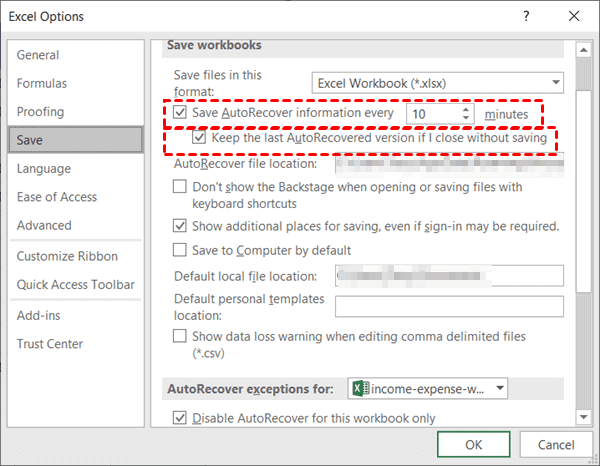5 Ways to Recover a Deleted Excel Sheet

If you've ever experienced the oh-so-common sinking feeling of realizing an Excel sheet you've been working on for hours has vanished, don't despair. There are several methods to recover that sheet, and in this post, we'll explore five effective ways to do so.
Recover from AutoRecover

Excel’s AutoRecover feature is your first line of defense against unexpected deletions:
- Check the AutoRecover Files: Open Excel, go to File > Info > Manage Workbook > Recover Unsaved Workbooks. Here, you might find your deleted file.
- Adjust AutoRecover Settings: Increase the frequency at which Excel saves recovery information by going to File > Options > Save. Set the “Save AutoRecover information every X minutes” to a lower number, like every 5-10 minutes.
🔔 Note: Ensure AutoRecover is enabled for your Excel version and that you know the recovery settings for future protection.
Using the Recycle Bin (on Windows)

If you’ve just deleted the Excel file without emptying the Recycle Bin:
- Open Recycle Bin: Navigate to your Recycle Bin on your desktop.
- Find the Excel File: Look for your file by sorting by ‘Date Deleted’ or using the search feature within the Recycle Bin.
- Restore the File: Right-click on the file and select ‘Restore’ to bring it back to its original location.
Check Temporary Files

Excel often saves temporary versions of your work, which can be found:
- Search for Temp Files: Use File Explorer (Windows) or Finder (Mac) to search for files with the .tmp extension.
- Open or Convert: Try opening the temp files in Excel or use software to convert these files to a readable format.
💡 Note: Be cautious when working with temporary files as they might not contain the full or latest data from your sheet.
Recover from Backup

If you’ve set up backups or used cloud services:
- Cloud Services: Check services like OneDrive, Google Drive, or Dropbox for automatic or manually backed-up versions.
- Local Backup: If you have a local backup system in place, you can retrieve the file from your latest backup.
Use File Recovery Software

In case the above methods fail, consider using recovery software:
- Choose Recovery Software: Software like Recuva, Disk Drill, or EaseUS Data Recovery Wizard can be effective in recovering deleted files.
- Scan and Recover: Run a deep scan on your drive where Excel was installed or stored. Be prepared for potentially long scan times depending on drive size.
- Proceed with Caution: Follow the software’s instructions carefully to avoid overwriting any recoverable data.
Through the steps above, you've seen that losing an Excel sheet isn't a final verdict. From leveraging Excel's own features like AutoRecover to employing external recovery tools, there are multiple avenues to explore. Remember to back up your data regularly and keep Excel's recovery settings optimized to prevent future issues.
How often should I save my Excel files?

+
Regular saving is key, ideally every 5-10 minutes, or use Excel’s AutoSave feature if available in your version.
Can I recover a file if the Recycle Bin has been emptied?

+
Yes, recovery software can still attempt to recover files even after the Recycle Bin is emptied, but the success rate decreases over time.
What’s the safest method to recover deleted files?

+
The safest methods involve using AutoRecover or checking your backups first, as these pose less risk to further data loss.



